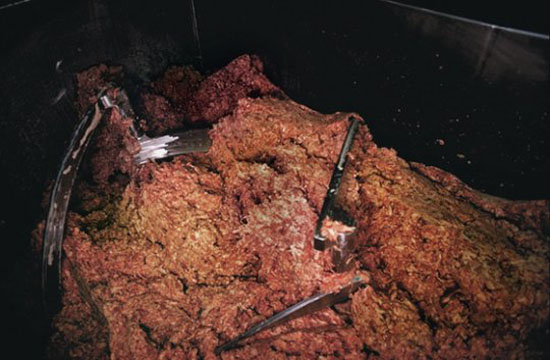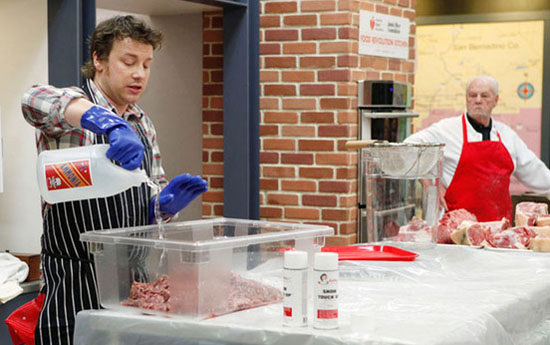
Pink slime for lunch, anyone?
Popular fast food restaurants like McDonald’s, Burger King and Taco Bell recently stopped using the controversial ground beef additive known as “pink slime” in their recipes, however, that didn’t stop the U.S. Department of Agriculture (USDA) from buying over 7 million pounds of the stuff for school meals.
Officially branded as “Lean Beef Trimmings,” the product is basically a disgusting mixture of beef scraps, cow connective tissues and other spare beef trimmings that have been treated with ammonium hydroxide to kill pathogens like salmonella and E. coli to make the meat safe and at least somewhat appetizing.
The pinkish substance — normally used for dog food — is then blended into traditional meat products like ground beef and hamburger patties as a sort-of “filler.”

Pretty gross, right?
Two former microbiologists at the Food Safety Inspection Service think so too.
“I have a 2-year-old son,” microbiologist Gerald Zirnstein told The Daily. “And you better believe I don’t want him eating pink slime when he starts going to school.”
Zirnstein was the first person to call the meat stuff “pink slime” after he toured a Beef Products Inc. production facility as part of an investigation into salmonella contamination in packaged ground beef. After the visit he said in an e-mail to his colleagues that he didn’t “consider the stuff to be ground beef.”
“We originally called it soylent pink,” said retired microbiologist Carl Custer, a 35-year veteran of the Food Safety Inspection Service. “We looked at the product and we objected to it because it used connective tissues instead of muscle. It was simply not nutritionally equivalent [to ground beef]. My main objection was that it was not meat.”
Custer says he first came across the pink slime back in the 1990s, and despite him voicing his concern about the gross stuff, it was officially approved under the George H.W. Bush administration.
Custer and Zirnstein both concluded in a study that the meat trimmings were a “high risk product,” however, “scientists in D.C. were pressured to approve this stuff with minimal safety approval,” Zirnstein said.
“My objection with having it in the schools is that it’s not meat,” Custer said. “It’s more like Jell-O than hamburger, plus it’s treated with ammonia, an additive that is not declared anywhere,” he said in reference to the lack of labeling on the product’s packaging.
“They’ve taken a processed product, without labeling it, and added it to raw ground beef,” Zirnstein said. “Science is the truth, and pink slime at this point in time is a fraudulent lie.”
The New York Times reported back in 2009 that despite the added ammonia, tests of “Lean Beef Trimmings” from schools nationwide uncovered dozens of instances of E. coli and salmonella pathogens.
Between the years of 2005 and 2009, salmonella was found 48 times, including two contaminated batches of 27,000 pounds of meat. E. coli was found three times.

A public outcry against the meat filler is being led most prominently by celebrity chef Jamie Oliver, who in the past has successfully waged war against flavored milk in L.A. school, and continues to fight for healthier school lunches.
News of the USDA buying 7 million pounds of “pink slime” to serve in school cafeterias across the country comes just weeks after the government outlined new guidelines to make sure students are given healthier options for school meals.
The new standards call for a wider selection of fruits, vegetables and whole grains, as well as less sodium and fat in school meals.














